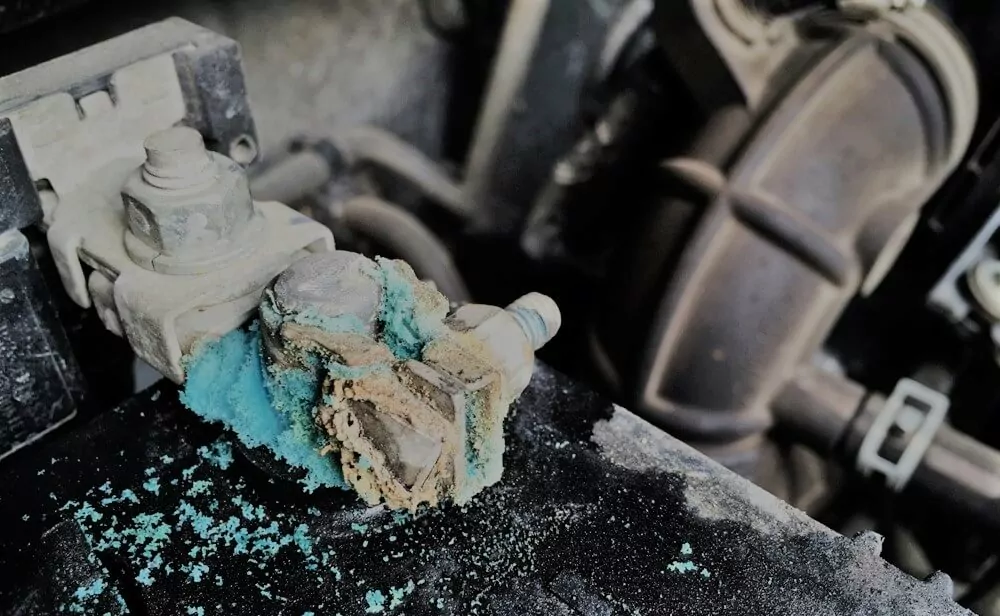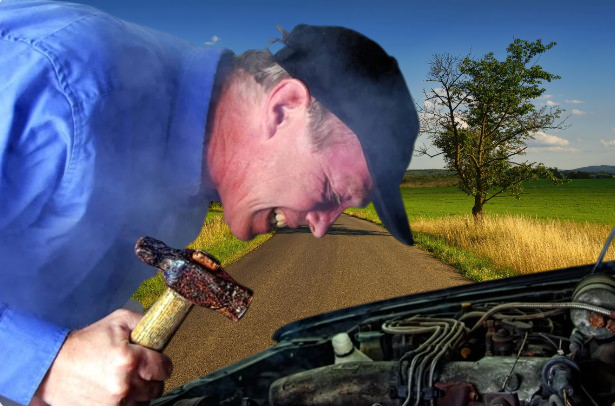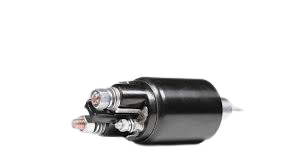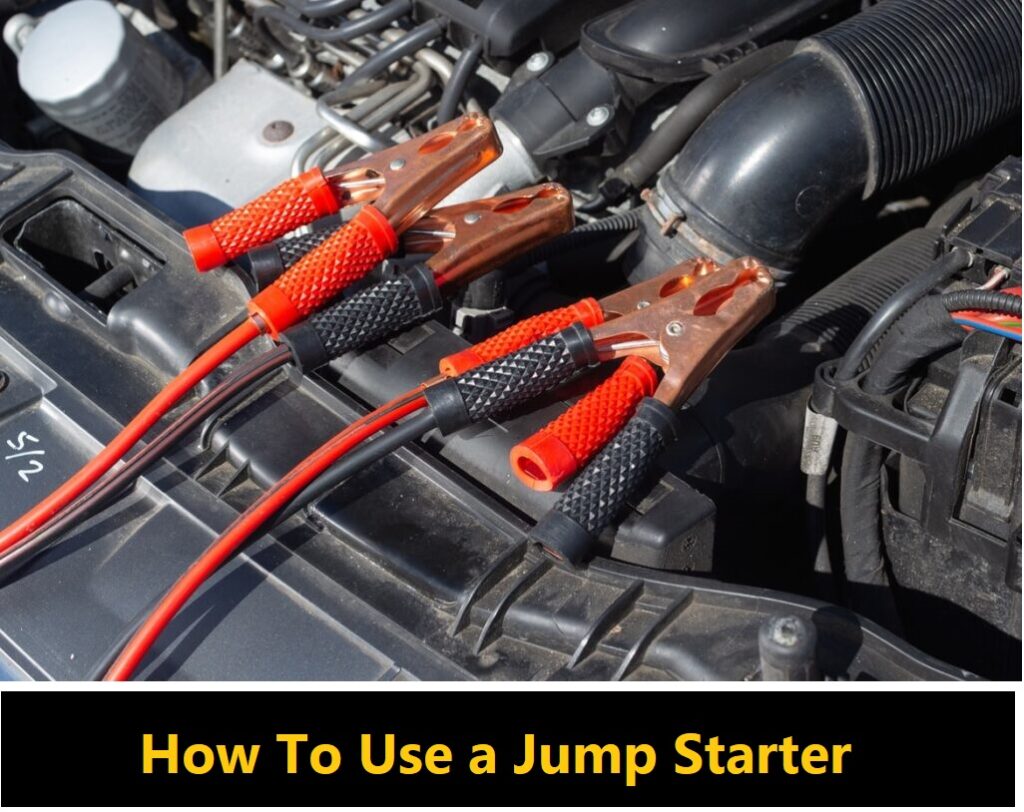Starting a car with a bad starter can be a real headache for car owners, especially when you’re stuck in an inconvenient place. Even though electric cars have reduced the occurrence of this problem, it hasn’t disappeared completely. That’s why learning to jump start a car with a bad starter can be useful in such situations.
In this guide, we’ll explore different methods that don’t require much mechanical know-how and only take a few minutes to try. But, we have to be really careful and prioritize safety. Always lift the driving wheels, put the car in neutral, and stay away from any moving engine parts. With that in mind, let’s check out the options to get your car’s starter working again and get you back on the road.
Keep scrolling to know how to start a car with a bad starter. Also we will answer everything about these questions mentioned below:
- How to start a car with a bad starter?
- What are the symptoms of a bad starter?
- How can you test if a starter is bad?
- How to start a car with a bad ignition switch?
How To Know if Your Starter Is Bad
Cars can sometimes be tricky when they don’t start, and one possible reason could be a bad starter motor. But don’t worry; we can figure out what’s going on. Let’s troubleshoot the problem step by step:
- Turn the key and observe:If you hear a strange chattering noise and the car doesn’t start, it might be related to the battery.
- If the engine tries to start but won’t fully start, it’s probably not the starter or battery causing the issue.
- If you don’t hear any sound or just a single click when turning the key, the starter might have a problem.
- Now, let’s check the battery terminals:Sometimes dirty wire connections can be the culprit. If you notice any corrosion, disconnect the wires, clean the terminals, and reconnect them securely.
- To be certain, use a volt meter to check the battery’s voltage. It should read at least 12.5 volts. If it’s lower than that, your battery is weak, and you’ll need a jump start. If the jump start works, then the problem wasn’t with the starter.
Assuming the starter is the issue, we’ll explore different troubleshooting steps to fix it. Don’t worry; we’ll have you back on the road in no time.
How to Start a Car with a Bad Starter
If your car’s starter is acting up and the car won’t start, there are some things you can try to get it going again. First, check the connections to make sure nothing is loose or dirty.
If everything looks okay, you can try tapping the starter gently with a hammer or jump-starting the car. If your car has a manual transmission, you can also try bump-starting the engine.
Start a car with a bad starter : Here’s How to Diagnose It
Checking Connections and Preventing Corrosion

Before you try anything else, it’s important to check the connection between the starter and the battery. If the connections are loose, the starter won’t get the power it needs to work properly.
You can easily tighten the battery terminals to make sure the connection is secure. While you’re at it, take a look for any corrosion. If you see any, it might be blocking the flow of power.
But don’t worry, you can easily clean battery corrosion with a mixture of baking soda and water.
Follow the positive wire if the battery connection looks good and there’s no corrosion. It should split into two wires—one going to the alternator and the other to the starter.
Give the wire going to the starter a gentle shake to see if it feels loose. If it does, just tighten the connection.
One common issue with car starters is corrosion. To prevent this problem, make sure your battery cable and terminals are free from any acid buildup.
Acid deposits usually appear as white, green, or blue coating on the battery terminal, post, or cable. Keep an eye out for these signs.
Examining Engine and Body Grounds

It needs a solid ground connection to ensure your car’s starter functions properly. This connection is established through contact with the transmission, and typically, there’s at least one ground wire linking the transmission to the car body.
If this connection becomes damaged, loose, or rusts, it can cause issues within the starter, making it difficult for your engine to start.
However, there’s another important aspect to consider. A bad engine ground might also contribute to the problem. Therefore, it’s essential to check both the transmission and engine ground to be certain.
Don’t forget to examine the ground between the battery and your car’s body too. You can use an external jumper cable between the negative battery terminal and a stable grounding point on the engine to verify the ground’s integrity.
In some cases, a malfunctioning engine ground wire or transmission ground wire can affect the overall ground of the starter. To prevent any problems and ensure the starter turns smoothly, thoroughly inspect these two grounds for any signs of rust or damage.
If necessary, you can use a jumper cable to create a direct ground connection from the battery’s negative post to the starter frame, which can help resolve the issue.
Gently Tapping the Starter

You might have seen people trying to get their car starter working by gently tapping or banging it. However, banging is not the best way to handle the situation.
Sometimes, giving the starter a slight tap can move it past a dead spot and fix the problem, allowing the engine to start again.
You can use a hammer, ratchet extension, or pry bar for this. Just locate the starter on the side of the motor and give it a gentle tap.
Keep in mind that not all cars respond to this method, especially those with transverse engines, which can make tapping difficult. In such cases, you’ll need to try other solutions.
As you attempt this, be careful and ensure the car is neutral and away from any moving parts. The issue could be related to worn-out electrically conductive brushes inside the starter.
Tapping the outer casing might help reestablish contact between the brushes and the spinning part of the starter.
Using a hammer is an option if you can reach down far enough. On the other hand, you can keep a two-foot-long, 2×2 hardwood stick in your trunk for such situations, which can make tapping easier.
Additionally, it’s essential to consider the flywheel. A bad flywheel could also be causing your car not to start. To check it:
- Remove the electric motor first and keep the car’s transmission neutral.
- Have someone use a ratchet or breaker bar to turn the center bolt of the crankshaft pulley.
- Inspect the flywheel for any broken or missing teeth that could prevent it from engaging with the starter gear. If you notice any issues, it’s best to seek help from a trained expert.
Inspect the Solenoid Wire

Now that we’ve checked the ground and positive wire on the starter, which are important for the motor to work, let’s focus on the solenoid. The solenoid has a key role in engaging the starter with the transmission’s ring gear.
If you notice the starter turning freely while you’re trying to start the engine, it’s likely due to a solenoid issue.
Find the smallest wire on the starter and make sure there’s no debris or dirt on it. To troubleshoot the solenoid, you can bypass this wire by connecting it to the battery with another small wire carrying 12V of current.
When you make this connection, you might hear a click sound. Now, try starting the engine again to see if the solenoid is causing the problem.
The solenoid acts like an electromagnetic switch, converting a small current from the ignition switch into a large current needed to activate the starter.
Solenoids can be built into starters or be separate components connected by a wire. If your vehicle has an external solenoid, it’s possible that the wire connecting it to the starter has come loose or has become dirty.
Check, reconnect, and clean it with a wire brush if necessary. If this was indeed the issue, your vehicle should start properly now.
In case you encounter a bad starter solenoid wire due to rust, there’s a workaround. Connect the starter and solenoid directly using a 12V cable from the car’s battery.
As you make this connection, you might hear a click sound. Now, turn on the ignition. Once the engine starts cranking, promptly unplug the 12V wire to prevent the flywheel from continuing to rotate with the engaged starter gear (pinion), which could lead to damage.
Jump Start the Car

If your car is giving you trouble starting, it could be because of a weak or drained battery. Don’t worry, though; you can jump-start your car using a portable jump starter or jumper cables from another vehicle. Here’s how to do it safely:
- Pop open the hood of your car and find the battery. If you’re not sure where it is, check your car’s manual. But if you notice the battery looks swollen or is leaking, don’t attempt to fix it yourself. Instead, call a mechanic to handle it, as it might need replacement.
- Assuming the battery looks fine, grab the red jumper cable and connect your weak battery’s positive terminal to the backup battery’s positive terminal or jump starter’s positive terminal.
- Now, take the black jumper cable and connect the negative terminal of the charged battery to any exposed metal part on your car.
- Time to start your engine. Let the battery charge for a few minutes.
Keep in mind that jump-starting isn’t always a guaranteed fix. A fully charged battery should normally provide enough power to start the engine.
But sometimes, the extra voltage from jump-starting can overcome any issues with the starter, making it work again. However, don’t count on it to work every time.
If you find yourself having frequent starting problems with your car, it’s best to have a professional mechanic check it out.
They can identify any underlying battery or starter issues and safely get you back on the road. Following these steps, you can jump-start your car and avoid being stranded.
Bypass the Starter Solenoid
Here’s a smart technique that mechanics have used for quite some time, and it can be quite useful if you have an older car or an easily accessible starter. When your car’s starter solenoid is giving you trouble, you can bypass it using a simple method with a screwdriver.
The process is simple: The starter terminal is directly connected to the positive terminal of your car’s battery.
By touching both the solenoid terminal and the positive terminal on the starter with a screwdriver simultaneously, you send a quick jolt of 12 volts directly to the solenoid. This closes the circuit and gets your car’s engine up and running.
It’s important to note that this trick is best used for troubleshooting purposes and should be done with the starter removed from the car to avoid any safety risks with moving parts. Always take necessary precautions and ensure your safety.
Alternatively, for those who prefer a more technical approach, you can use a voltmeter or multimeter to check if the starter solenoid is receiving sufficient power from the battery.
Set the meter to 20 volts and connect its positive and negative leads to the appropriate posts. Check the voltage while turning on your car’s headlights.
If the reading falls between 12.7 and 13.2 volts, your battery is likely in good condition, and the issue might lie elsewhere. However, if the reading is below 12.4 volts, your battery needs a charge to start the engine.
Push-Start the Car

Push-starting, also known as bump-starting, is a useful method for manual transmission cars when the starter fails or the battery is dead.
It involves getting the vehicle moving by pushing it, and then releasing the clutch to start the engine. Keep in mind that this technique is specifically for manual transmission vehicles.
Here’s how to perform a push-start:
- Sit in the driver’s seat and hold the key in the start position while pressing down on the clutch pedal.
- Put the car in second gear (or first gear if you have a shorter distance to push).
- Have some strong individuals push the car from behind, building up a speed of about 5-10 mph.
- Once you reach that speed, release the clutch while still turning the key to start the engine.
- The engine should catch if done correctly, and your car will start running.
Remember, push-starting is a temporary solution, not a replacement for fixing the starter. It can put additional strain on certain components of the car, so it’s crucial to get the starter repaired as soon as possible.
Also, keep in mind that this method only works for manual transmission cars and not for automatics.
In the event of a bad starter in a manual car, push-starting can be a helpful technique to get your vehicle moving until you can address the main issue.
Examine The Engine Flywheel
When you try to start your car, the starter motor engages with the flywheel to turn the engine. However, if your car is not starting, there’s a possibility that the flywheel could be the cause of the problem.
To check the flywheel, you need to first remove the starter motor and place the car’s transmission in neutral. Then, ask someone to use a ratchet or breaker bar to manually turn the center bolt of the crankshaft pulley.
The crankshaft pulley is essential for the operation of various components in your car, including the steering pump and alternator.
While examining the flywheel, look for any signs of damage, such as broken or missing teeth that might prevent it from engaging with the starter motor.
If you find any issues with the flywheel’s ring gear, it may need to be replaced. However, it’s crucial to have a trained expert handle this task for you to ensure it’s done correctly and safely.
How to Hotwire a Car with a Bad Ignition Switch
To begin, remove the surrounding panels located near the battery in your car. Use a socket wrench or screwdriver to remove the four bolts that secure the battery.
If necessary, you can use pliers to assist in removing them. Once the panel is off, you will need two wires: a red wire for the positive (+) end of an automotive battery terminal connector, positioned near the airbag cover attachment point on the top center of the left side panel.
Insert one end of the wire into the designated post and the other into the bottom right corner post from underneath, passing it through a small hole drilled during the vehicle’s initial assembly.
Don’t forget to include the ground wire. Before attempting to start the engine again, connect these three items. If any issues arise during the process, everything will return to the previous state, which is not ideal.
What are the symptoms of a bad starter?
Here are some common signs that your car’s starter might not be functioning properly:
- Engine won’t start: When you try to start your car, and nothing happens, it’s a clear indication of a possible starter problem.
- Unusual noises: If you hear strange grinding, whirling, or clinking noises while starting the car, it could be a sign of starter trouble.
- Smoke from under the hood: An overheating starter can lead to smoke or a burning smell coming from under the hood.
- Intermittent starting issues: When the engine doesn’t start immediately but starts on the second try, there could be a problem with the starter relay.
How Do You Start a Car With a Bad Ignition Switch?
If you encounter a scenario where your car’s ignition system is not working, you have two methods to consider for starting the car.
The first option involves hotwiring, which is effective for cars made before the mid-1990s. The second option is jumpstarting the car.
How to Fix a Starter Without Replacing it?
Fixing a starter without replacing it is possible in some cases, but it depends on the specific issue. Here are some steps you can take to troubleshoot and potentially fix a starter:
- Check Connections: Start by inspecting the battery terminals and connections to the starter. Loose or corroded connections can prevent the starter from getting enough power. Ensure all connections are secure and clean any corrosion.
- Tap the Starter: Sometimes, a starter can get stuck in a dead spot. Gently tap the starter with a hammer while someone tries to start the car. Be careful and ensure the car is in neutral, away from moving parts.
- Examine Grounds: Make sure the ground connections between the transmission, engine, and battery are solid. Clean any rust or corrosion on the ground wires.
- Inspect the Solenoid Wire: Check the solenoid wire for dirt or debris. You can bypass the wire by connecting it directly to the battery with a small wire carrying 12V of current. This can help determine if the solenoid is causing the problem.
- Jump Start the Car: If the issue is a weak battery, jump-start the car using a portable jump starter or jumper cables from another vehicle.
- Push-Start the Car (Manual Transmission): If your car has a manual transmission and the starter is not working, you can push-start the car. With the clutch pressed, have someone push the car, gain some speed, and then release the clutch while turning the key to start the engine.
Remember, these are temporary solutions, and a bad starter may eventually need replacement. If the problem persists, it’s best to have a professional mechanic diagnose and repair the starter for a long-term solution.
Can a Starter Motor be Repaired at the Roadside?
In some cases, a starter motor can be repaired at the roadside, but it depends on the nature of the problem and the availability of tools and replacement parts. Here are some factors to consider:
- Simple Issues: If the problem with the starter is relatively simple, such as a loose wire or a minor connection issue, it might be possible to fix it at the roadside with basic tools.
- Battery or Solenoid: If the issue is with the battery or the starter solenoid, a jump-start might temporarily resolve the problem, allowing you to continue driving to a nearby repair shop.
- Tools and Expertise: Repairing a starter motor requires some mechanical know-how and access to the right tools. If you or someone with you has the necessary skills and equipment, it could be feasible to attempt a roadside repair.
- Safety Considerations: It’s essential to prioritize safety when attempting any repairs at the roadside. Working on a vehicle in traffic or unsafe conditions can be dangerous. If you are unsure about what you are doing or the situation is hazardous, it’s best to seek professional help or have the car towed to a repair facility.
- Replacement Parts: If the starter motor has a major issue requiring replacement parts, it might not be possible to repair it fully at the roadside unless you carry the needed parts with you.
While some minor starter issues can be addressed temporarily at the roadside, a complete and reliable repair might be better handled by a professional mechanic in a well-equipped repair shop. Suppose your car’s starter is giving you trouble.
In that case, it’s safer to have it properly diagnosed and repaired by a qualified technician to avoid further complications and ensure your safety on the road.
Bad Starter Replacement Cost
When it comes to starting a car with a bad starter, the cost can range from $200 to $1,500.
Typically, a new starter will cost you around $50 to $400, while labor charges may vary from $150 to $1,100. The complexity of accessing the starter’s location in your vehicle will influence the labor cost.
Read in Details: How Much is a Starter for a Car
If you prefer to save some money, you can consider purchasing a rebuilt starter or even try installing it yourself at home.
It’s important to be aware that if your starter fails while you’re away from home and you can’t get your car running, you may need to cover the expenses for towing. That’s why addressing any starter issues promptly is crucial to avoid getting stranded.
How to Start a Car With a Bad Starter – Easy Tips Video
Recommendation
Why Won’t My Car Start? Reasons and What to Do?
What is A Starter in A Car? Purpose, Limitations, & Improvements of a Car Starter
How To Tell If A Fuse is Blown? Check and Replace Blown Car Fuse
How to Test a Fuse With a Multimeter
The Best Car Wax Types Explained
Simple Tricks To Get Bird Poop Off Car
The Ultimate Guide to Use Power Waxer
Conclusion
Starting a car with a bad starter can be frustrating, but knowing how to troubleshoot and resolve the issue can save you time and stress. There are various methods to try, from checking connections and grounds to jump-starting or tapping the starter. However, always prioritize safety and seek professional assistance for a long-term fix. Regular maintenance and prompt repairs will keep your car running smoothly and avoid future starting problems.
FAQs
Q – Can you start car without starter?
A – Unfortunately, if the starter motor has completely gone there’s no way to get your car going again. However, when a vehicle doesn’t start, it’s typically to do with the battery’s insufficient voltage to start the motor.
Q – Can I jump start car with bad starter?
A – Most of the time, NO, you can’t jumpstart a car with a bad starter unless you repair it. When the battery is dead, jumper wires or boosters are employed. You use a second battery to provide the necessary electricity to start the car.
Q – Why does tapping on a starter make it work?
A – This works because the brushes wear out, resulting in an inadequate electrical contact. By gently tapping on the back of the starter with the hammer, the brushes are knocked back into place so they can make contact one more time.
Q – What destroys a starter?
A – Electrical connections faulty. Solenoid switch (engaging relay) stiff or faulty. Electric motor damaged electrically. Single-pinion gear, starter pinion or freewheel damaged.
Q – Will a dead starter click?
A – Unlike an electrical problem, an issue with the starter or starter relay (a switch-like device that transmits power to the starter) will trigger a single loud clicking sound rather than rapid clicking sounds. One of the symptoms of a bad starter is a single clicking noise when you turn the key or push the start button.
Q – Why won’t my car start but the battery is fine?
A – If your car won’t start but the battery is good, the most common cause is a Bad starter – though it could also be to do with your fuel. You may have insufficient fuel to get the car going.
I hope I have answered all these questions:
- How to start a car with a bad starter?
- What are the symptoms of a bad starter?
- How can you test if a starter is bad?
- How to start a car with a bad ignition switch?
Please share the article with others to spread the information. We will keep coming with lots of related information.




